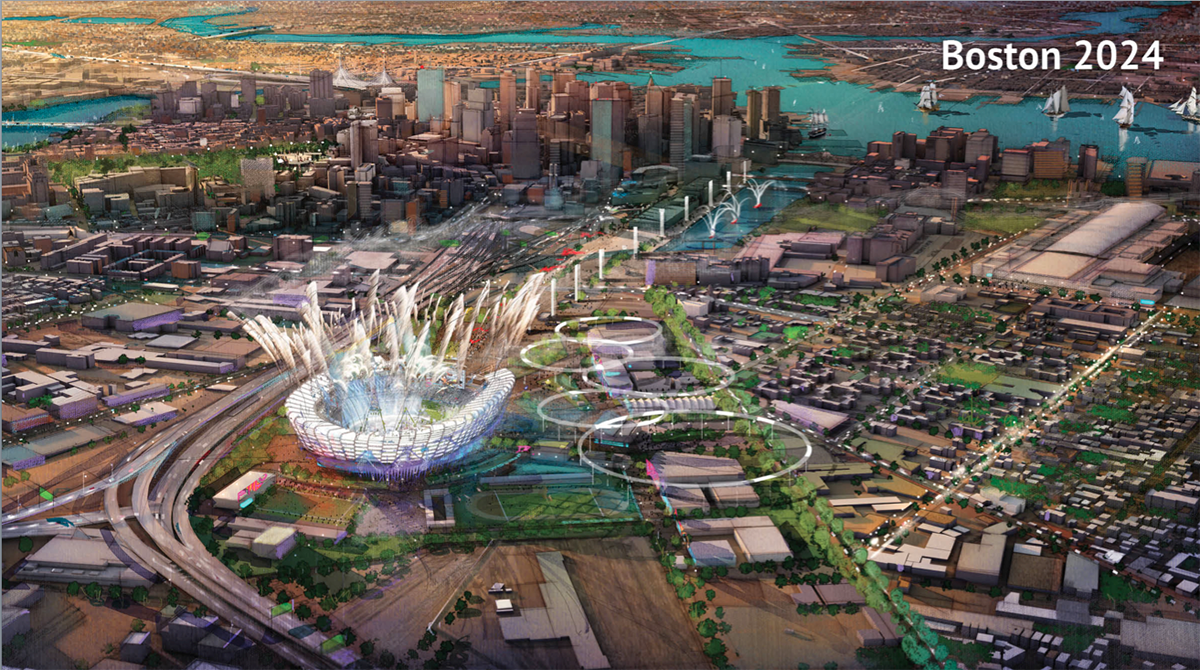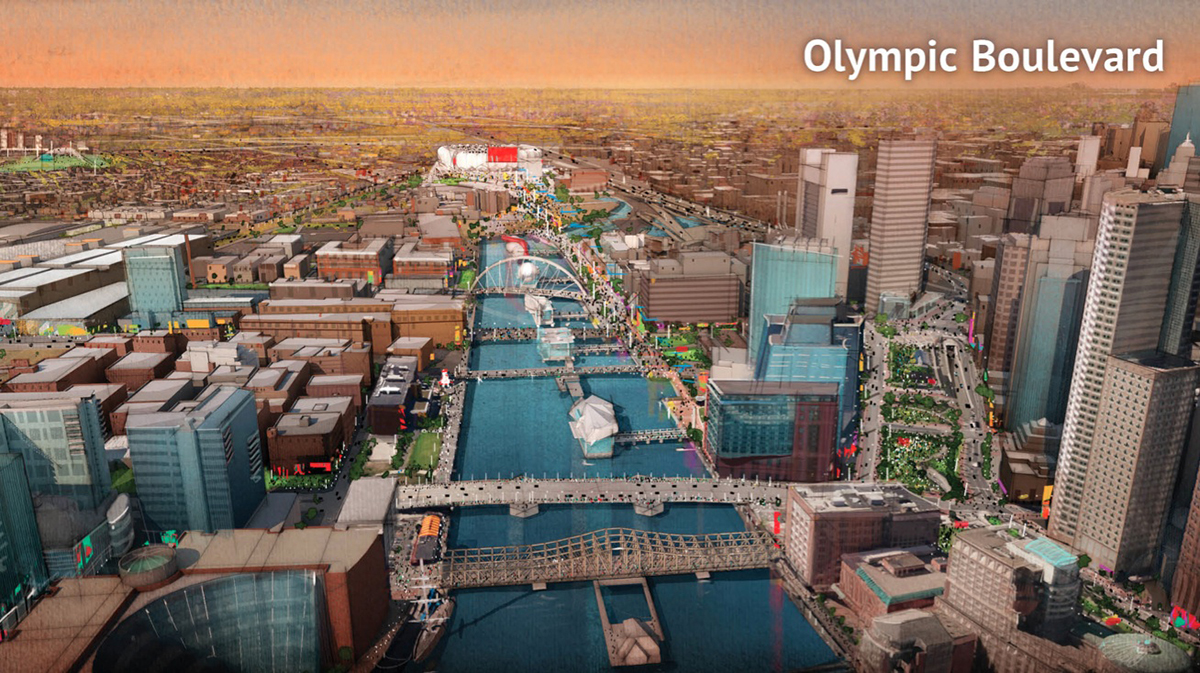Olympics Supporters Share Preliminary Details of 2024 Bid Proposal
Weeks after the announcement that Boston would represent the U.S. in its quest to host the 2024 Summer Olympics, Boston 2024, the privately funded group backing the bid process, revealed new information and renderings that were part of a presentation floated to the United State Olympics Committee in California in late December.
At the Boston Convention and Exhibition Center on Wednesday, David Manfredi, co-chairman of Boston 2024’s planning committee, ran through the “proof of concept” presentation slide-by-slide, and boasted that if Boston were to host the games, they would be the most “walkable” Olympics in recent history and leave a lasting “legacy” that would benefit residents and workers.
“We believe Boston is the right-sized city for the Olympics,” he said.
Manfredi said proposed projects in the pipeline matched with the city’s current layout, including public transportation options, bike paths, and pedestrian-friendly access all combine to make a Boston 2024 Olympics appealing. “We are a great host city,” he said.
Manfredi explained that if Boston were picked, the venues and events could be separated into two major “clusters,” allowing attendees and tourists to easily get from place to place. He said 28 of the 33 proposed venues would be within a six-mile radius.
One of those proposed areas would be called the “Waterfront Cluster,” with structures located near UMass Boston, “Midtown,” and the South Boston waterfront. Within the Waterfront Cluster, attendees would be able to take in the opening and closing ceremonies at the Olympic Stadium, and watch judo, powerlifting, sailing, and table tennis events. The Athletes’ Village could also be housed within that region.
“It’s in the heart of the city,” said Manfredi of the Midtown portion of the plan. “It has immediate access to both the Andrew Station and Broadway Station, as well as being within a mile of South Station. We think that Midtown—what we are calling Midtown—is the perfect site. It’s connected to the waterfront, it’s connected to the Greenway, it’s connected to the Harbor.”
The second “anchor” of venues would be dubbed the “University Cluster,” and would make use of college and university buildings and properties. Archery, fencing, football games, and swimming competitions would take place within the University Cluster, as shown in the image below:
As shown in a slide titled “Olympic Boulevard,” the stretch of land that runs between Fort Point and the Innovation District, and parts of Downtown Boston near the Esplanade and South Station, would serve as a mecca for tourists and lead to the Olympic Stadium, according to details from the presentation.
“Olympic Boulevard becomes a pedestrian way,” said Manfredi. “It connects the games to the Greenway, and it connects the games to the heart and the center of the city.”
The bid renderings also included a glimpse at a possible beach volleyball stadium erected on Boston Common, not far from the bandstand and the State House. In that image, Boston 2024 officials included a proposal to place a giant screen for spectators to watch the games, as well as tents stretched out throughout the public park space.
“The legacy here is really the reinvestment in the Common; the opportunity to refresh the Common in terms of its playing fields and in terms of its recreational value,” Manfredi said.
Boston 2024’s entire proposal to the USOC can be read below. Officials did not release financial information in regards to the costs to build structures and buy land, because they said it would make the bidding process, in the event that Boston is selected, uncompetitive.
The city, in conjunction with Boston 2024, will host nine community meetings over the next nine months to address residents’ concerns and talk about the benefits of bringing the Olympics to the region. The first public meeting on the Boston 2024 effort will be held on January 27, at 6:30 p.m., at Suffolk Law School.







